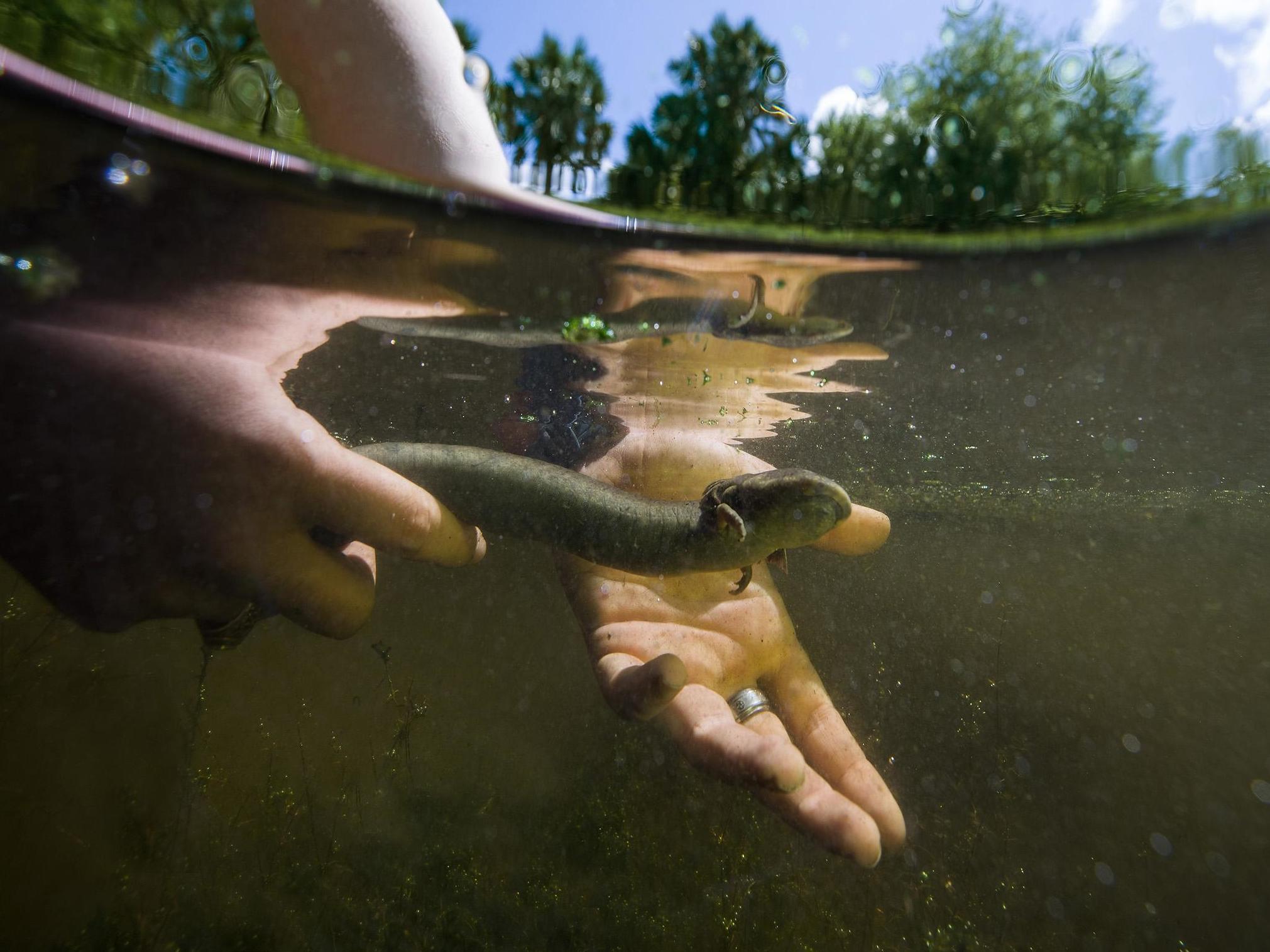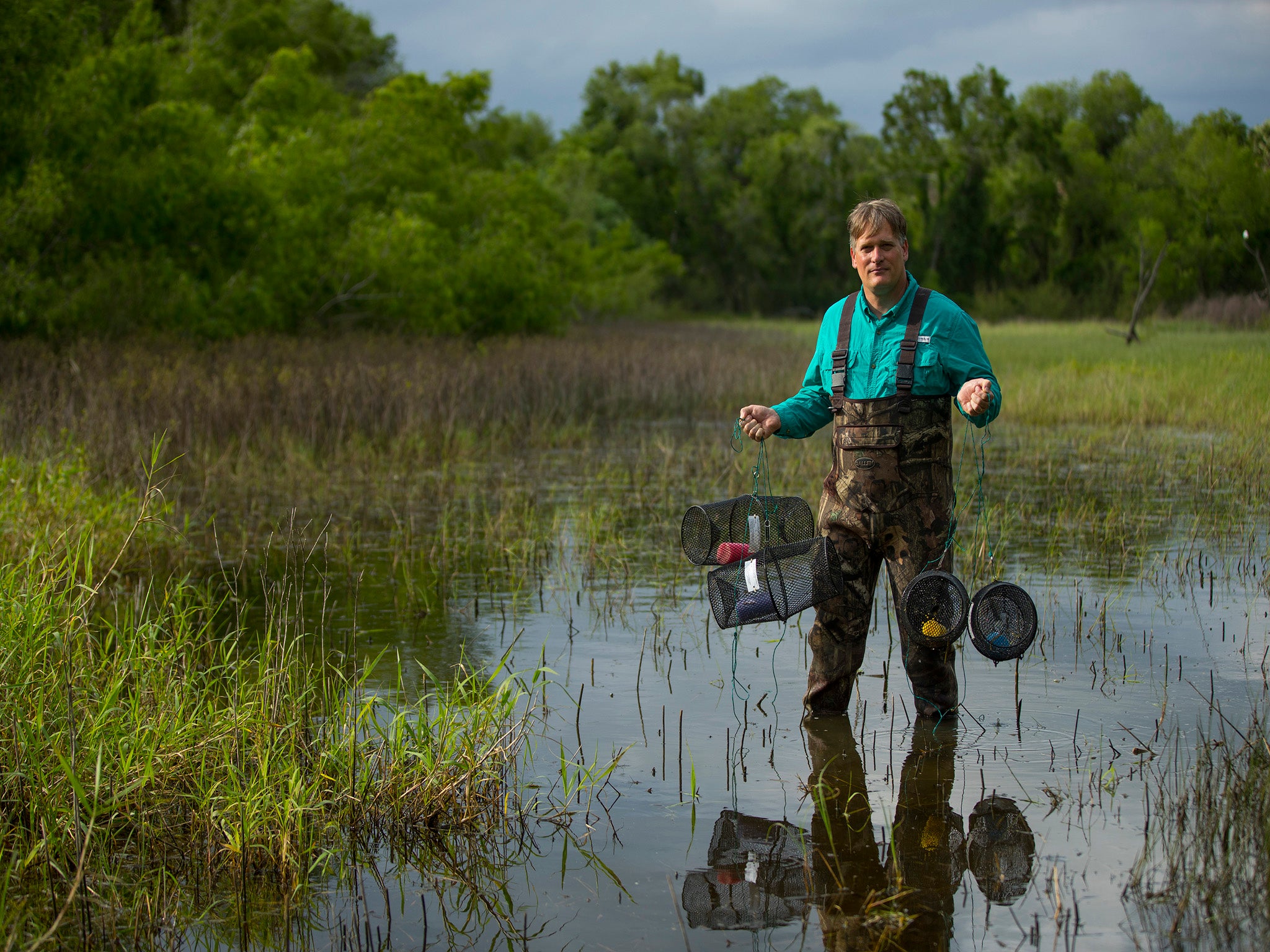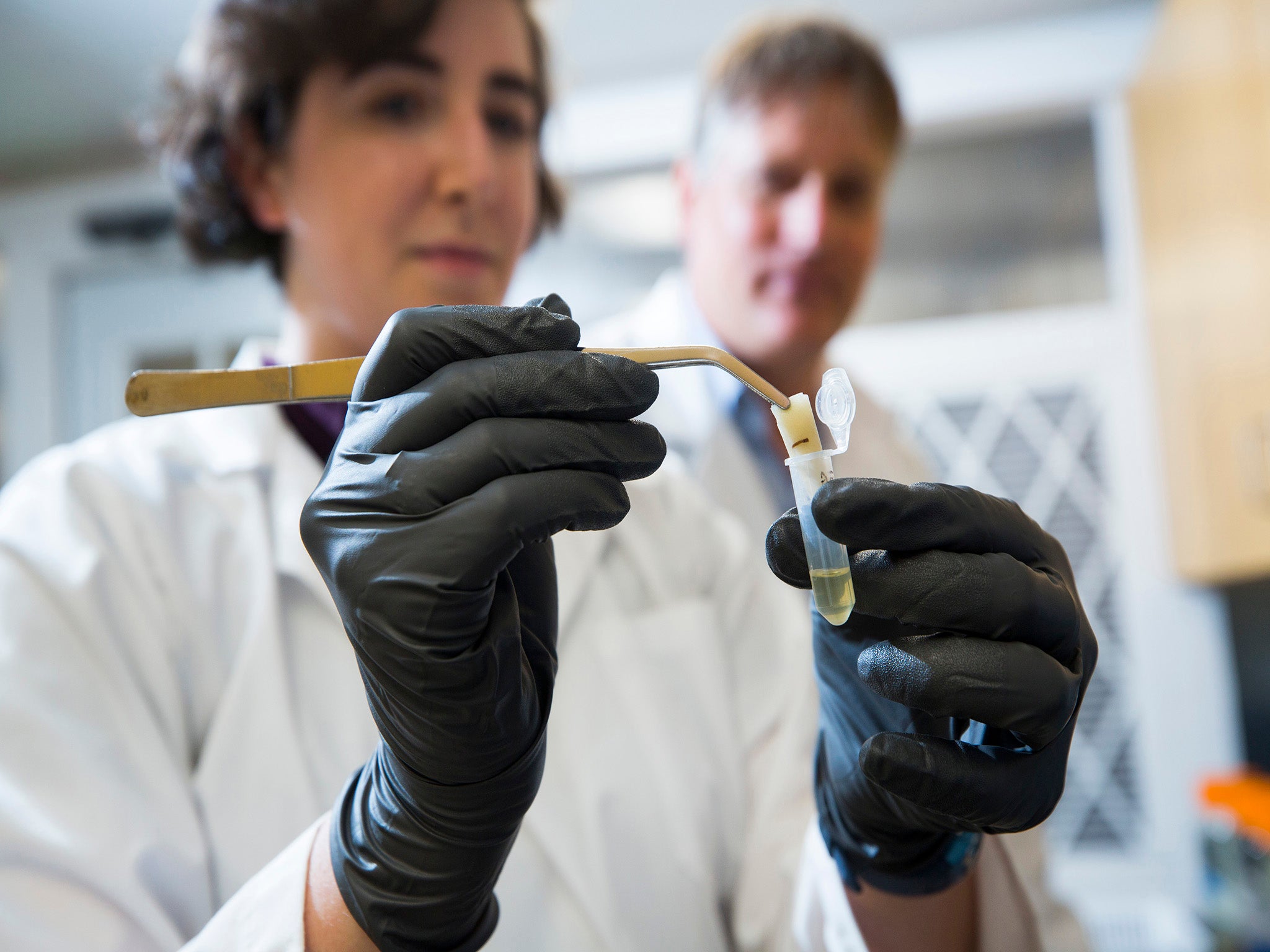Trump's border wall will hinder the identification of a new species of salamander
The fence will cut through their habitat in the Rio Grande, and will be disastrous for other species as well

Your support helps us to tell the story
From reproductive rights to climate change to Big Tech, The Independent is on the ground when the story is developing. Whether it's investigating the financials of Elon Musk's pro-Trump PAC or producing our latest documentary, 'The A Word', which shines a light on the American women fighting for reproductive rights, we know how important it is to parse out the facts from the messaging.
At such a critical moment in US history, we need reporters on the ground. Your donation allows us to keep sending journalists to speak to both sides of the story.
The Independent is trusted by Americans across the entire political spectrum. And unlike many other quality news outlets, we choose not to lock Americans out of our reporting and analysis with paywalls. We believe quality journalism should be available to everyone, paid for by those who can afford it.
Your support makes all the difference.The chicken liver draws them in. Darkness has fallen over the Sabal Palm Sanctuary, and beneath the weed-choked waters of the resaca – a seasonal marsh – serpentine forms awaken in the muck. Following the smell, they slither through holes in traps that have been placed to capture them. There they stay as the night rolls overhead into dawn – and Richard Kline and his colleagues come tramping up the trail.
Kline is an ecologist at the University of Texas Rio Grande Valley in Brownsville, a city nestled against the southernmost border of Texas. The creatures in the traps are sirens: eel-like salamanders with big feathery gills, pairs of tiny forelimbs and slightly vacant expressions. Among the largest salamanders in the world, they can grow up to three feet and inhabit the bottom of ponds and blackwater swamps across the southeastern United States.
Their behaviour and ecology are poorly understood; sorting out the various species is a headache. Kline suspects that the sirens of the Texas borderland are an entirely new species. But proving that will take time, which the population might not have. Their habitat is under considerable ecological pressure: the taming of the wandering Rio Grande and its nourishing floods has left the seasonal marshes deeply parched. Outside the preserves, humans are pressing in. The Lower Rio Grande Valley is one of the fastest-growing areas in the nation, with an estimated population of 1 million.
And then there is politics – specifically, the matter of the border fence. While president Donald Trump’s attempts to force the construction of a border wall have often dominated headlines in recent months, congress had, back in March 2018, already passed more than $600m (£470m) in funding for new fencing in the Rio Grande Valley. This will include a 150-foot “enforcement zone” – stretches of clear-cut ground – on the side facing Mexico, and will cut apart large swaths of Bentsen-Rio Grande Valley State Park and the National Butterfly Centre, whose seasonal resacas often hold sirens of their own. (Sabal Palm Sanctuary currently sits beside a line of border fencing, with a sign that assures people they’re still in the United States). The fence’s fragmentation and barricading of vital pieces of habitat are disastrous for many creatures, Kline says, the siren among them. Unable to colonise and recolonise the resacas they once depended on, sirens are likely to face a grim future.
“When the border fence went up there was habitat all along the Rio there, small ponds and things like that,” he says. “Those are now roads and fence. In Roma (a town 120 miles away), they’re talking about putting in a giant concrete embankment. A big barrier like that to water flow and pathways is not good. And I think it’s hard for people to understand that if they’re not down here to see the actual application of it.”

Inside the sanctuary, amid the lush vegetation on the banks of the resaca, Kline’s postdoc Drew Davis and graduate student Krista Ruppert splash out into the marsh in neoprene waders, gathering up the traps from among the reeds. “They look similar to lots of other sirens,” Kline tells me. “But they might not be – they have behavioural differences and diet differences, and maybe physiological differences.”
Like their relatives elsewhere, the sirens of the Rio Grande are nocturnal. They seem to largely subsist on freshwater invertebrates, small fish and bits of carrion. They squeak if handled too roughly, and deal with hot summers and drying marshes by burying themselves in cocoons, deep in the mud. While largely aquatic and able to breathe through their gills as well as lungs and skin, they can drown if unable to gulp air from the surface. In some areas, they’re incredibly common, and in others, you can’t find them at all.
This last aspect of siren biology is a challenge for Kline’s lab. Sirens are so secretive that one of the best ways to detect them is to take water samples and look for environmental DNA, traces of shed cells left by anything living in a habitat. But since samples from live sirens are also useful, the researchers leave traps in various places at six survey sites. They toss a slice of pool noodle inside each one to keep it from fully submerging and drowning any sirens inside.
Out in the marsh, Davis makes a pleased noise and hauls up a trap, bringing it over for us to look. Inside is a siren over a foot long, surrounded by a carpet of flopping tadpoles and water beetles. Kline fills a bucket with water and motions to me to try to handle the siren. Sirens are remarkably slippery, enabling them to slide through a predator’s jaws with ease. But it’s an overcast day and the water is cold, leaving the siren sluggish. Its tiny toes dig with surprising power into my fingers as it flops around. Then, warmed by my body heat, it almost wriggles out of my hands before I get it into the bucket.
Kline’s team will later manoeuvre the siren into a wet sock, take a clipping of its tail fin for genetic analysis in the lab, then photograph it to analyse the unique markings on its head. Rio Grande sirens resemble other American sirens so closely that any species-level differences have to be teased out genetically. Unfortunately, siren genomes are about 15 times the size of the human genome, filled with a labyrinth of redundant and junk genes that make them difficult to parse. To determine whether the borderland sirens are a new species, Kline needs healthy populations from which to draw samples. The building of border fencing puts further pressure on an already marginal population; the pressure Kline is feeling lies in whether this potential new species will still have a home by the time it’s formally recognised.

With all of the traps hauled in, Kline’s team takes stock. They’ve caught six sirens. One drowned overnight when its trap got submerged. Its body will be used as a museum specimen, thus sparing one of the living sirens that fate. The rest of them, except for the one I wrangled, are slipped into wet socks, their tails clipped and photos snapped before they’re released. I pick up the bucket with the siren I handled. Its gills are fanned out like peacock feathers, and it occasionally slurps tiny breaths of air. Kline plans to keep it for a few days to get better photos before returning it to the resaca. For now, it’s bound for his truck and the open road, past the Customs and Border Protection agent leaning back in his car, watching the rustle of trees on the other side of the fence.
© Washington Post
Join our commenting forum
Join thought-provoking conversations, follow other Independent readers and see their replies
Comments